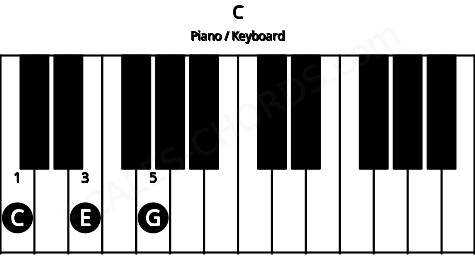The G chord piano is another essential chord that every pianist should master. Whether you’re a beginner or an experienced player, the G chord piano plays a crucial role in a wide variety of musical styles, from pop and rock to classical and jazz. In this guide, we will explore how to play the G chord piano, its components, variations, and common uses in music.

What is the G Chord Piano?
The G chord piano is a major chord made up of three notes: G, B, and D. This chord produces a bright, uplifting sound, typical of major chords. The G chord piano serves as the tonic (I) chord in the key of G major and is a pivotal chord in many musical compositions across different genres.
Components of the G Chord Piano
To understand the G chord piano, it’s important to recognize its three key components:
- G – This is the root note, and it gives the chord its foundation.
- B – The major third, which creates the happy and bright sound.
- D – The perfect fifth, which stabilizes the chord and adds fullness to its tone.
Together, these three notes—G, B, and D—create the harmonious sound of the G chord piano, which is central to countless musical pieces.

How to Play the G Chord Piano
Learning how to play the G chord piano is simple. Follow these easy steps:
- Locate the G Key – Find the G note, which is the white key immediately to the left of the group of three black keys on the piano.
- Place Your Thumb on G – Press the G key with your right-hand thumb.
- Place Your Middle Finger on B – Move to the B key and press it with your middle finger (3rd finger).
- Place Your Pinky on D – Press the D key with your pinky finger (5th finger).
Tips for Playing the G Chord Piano
- Practice placing your fingers correctly on the keys to achieve a clear and clean sound.
- Start slowly and ensure that each note of the G chord piano is distinct and well-articulated.
- Once you’re comfortable, practice transitioning between the G chord piano and other basic chords, such as C and D, to improve your overall chord progression skills.
Variations of the G Chord Piano
While the basic G chord piano consists of G, B, and D, there are several variations that can add flavor and complexity to your playing:
G Major 7 (Gmaj7)
The Gmaj7 chord adds the F# note, giving the chord a more sophisticated and jazzy sound. The notes for this chord are G, B, D, and F#.
G Minor (Gm)
The Gm chord replaces B with B♭, creating a more melancholic or somber tone. The notes for this chord are G, B♭, and D.
G Suspended 4 (Gsus4)
The Gsus4 chord replaces B with C, creating an open and unresolved sound. The notes for this chord are G, C, and D.
G Power Chord (G5)
The G5 chord omits the third (B) and consists only of the root (G) and the fifth (D). It is commonly used in rock and pop music for a simpler, bold sound.
Common Uses of the G Chord Piano
The G chord piano is widely used in many genres of music. Here are some common ways it appears in musical compositions:
- In Pop and Rock Music: The G chord piano is frequently used in songs like “With or Without You” by U2 and “Wonderwall” by Oasis. Its bright, uplifting sound makes it a staple in these genres.
- In Classical Music: The G chord piano is central to many classical compositions, often appearing in various forms of chord progressions within the key of G major.
- In Jazz and Blues: In jazz and blues, the G chord piano can be extended into more complex chords like G7, Gmaj7, or Gsus4 to add richness and tension to a progression.
Conclusion
Mastering the G chord piano is essential for any pianist, whether you are just starting out or expanding your musical knowledge. Understanding the components of the G chord piano, learning to play it, and experimenting with its variations will help you build a strong foundation for playing a variety of songs and compositions.
With practice, the G chord piano will become a powerful tool in your musical journey, allowing you to play and compose across various genres. Keep practicing and enjoy discovering the many ways this chord can be used in your music!
For further reading : https://en.wikipedia.org/wiki/Piano
For more articles : https://pianopassion.org/




Leave a Reply